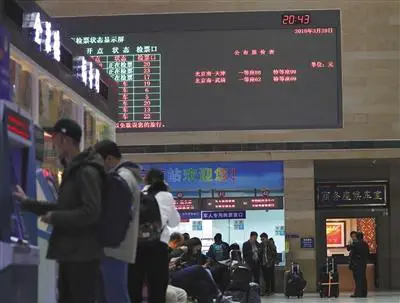Long seen as a key supplier of raw timber, Russia is looking to move up the logging industry value chain. Moscow is considering legislation to limit the export of round timber and introduce a quota system favoring companies who invest in local processing facilities.
The unification of Russia’s various timber export rules means that companies that work on value-added products would see export duties drop to 6.5% from 25% at present. Moreover, only firms with processing facilities in Russia’s Far East will be able to obtain a quota for the export of unprocessed timber.
The move is intended to drive an increase in timber processing volumes in the Far East, which is a major supplier for China and other Asian markets. At present, most timber exporters based in the region engage only in the sale of unprocessed timber. The Far East accounts for a quarter of Russia’s total timber reserves but only eight percent of processed timber volumes.
“We want to set a quota for the export of untreated timber from the Far East and link it to the volume of investment in processing. It will be a low duty, and a quota. For those who do not go on to develop processing capacities, in a few years the export duty will rise significantly,” Deputy Minister of Industry and Trade, Viktor Yevtukhov, told the media.
Timber processors operating in the Far East are expected to have their tariff-linked quota set at four million cubic meters a year, starting from 2018. The current production of untreated timber is around 16.5 million cubic meters a year.
The share of the tariff quota allotted to each company will be based on its forest products export volume from the previous year. To qualify for the new scheme, companies will need to make sure that processed timber products make up at least 20% of their total product export value. That ratio will rise to 25% in 2019, and subsequently increase to 30% in 2020 and 35% in 2021. The change in the timber export system still needs to be approved by the government.
Russian timber volumes are growing. Last year, raw timber exports increased by 3.2% and amounted to 20.7 million cubic meters. The largest importer was China, which bought 12.76 million cubic meters,
8.5% more than in 2015. In general, China accounts for more than 60% of Russian timber sales.
The reason Russia introduced 25% export duties was the country’s accession to the WTO and the obligations that this brought, according to Natalia Antonova, chief researcher at the Far Eastern Branch of the Institute for Economic Research.
“Starting in 2007, export duties began to increase: first to 15%, then to 25%,” she told Asia Times. “Later on, individual tree species – spruce and pine – saw export quotas slapped on them [and] the duty on spruce was cut to 13%, and on pine to 15%.”
In the Far East, the trees that make up the bulk of the exports are larch and Ayan spruce. “These are breeds that are not subject to quotas and reduced duties, and they were exported with a 25% tariff,” Antonova said. “This was a violation of competitive conditions. Now the situation
can be corrected. Decreasing the duty to 6.5%, in my opinion, is
restoring justice to the situation.”
Changes in the duties and quota system should be a boon for large timber firms. Mid-sized firms will now have an incentive to get into processing, while smaller outfits can be integrated into the bigger supply chains, Antonova said. “These measures are being passed in order to reduce the cost of production of the exported goods, making it more competitive abroad. I’m not sure that we’ll see a lot more investment, as already a lot has been invested. But, the measures may help existing facilities to operate at or near capacity, which they are not doing right now because the products are less competitive.”
Forestry industry analyst Igor Novoselov believes that the government is using the quota system to bolster the volume of processed timber, while for timber processing companies it is a way to secure enough raw materials inside Russia’s Far East.
The total timber reserves in the Russian Far East are 21 billion cubic meters, or 51% of the entire Asia-Pacific forest volume. More than 80% of the forest of the Far East is made up of coniferous species and the largest resources are in the Sakha Republic (Yakutia), a territory inside the Far East region that by itself is the size of India. Sakha’s 8.8 billion cubic meters of forest resource is followed by the Khabarovsk territory, which has 5.2 billion cubic meters.
The largest timber exporters in the Far East are in the Primorsky and Khabarovsk territories. They include: OOO Business Marketing, JSC Terneyles, AO Shelekhovsky Integrated Timber Industry, ZAO Les Export, and JSC Primorskiye Lesopromishlenniki.
Most major timber companies declined to comment on the proposed changes for the industry and the government’s new measures. However, a representative of Primorsk-based JSC “Mining Company” AIR, which also runs a timber extraction, processing and export business, said the company does not expect to experience wholesale changes due to the measures.
The representative said, however, that the company hopes there will be more raw materials available on the local market and that it will be able to use its production facilities to capacity. AIR currently supplies 80 cubic meters of timber but has the capacity to produce 100 cubic meters.
(ASIA TIMES)
 简体中文
简体中文



